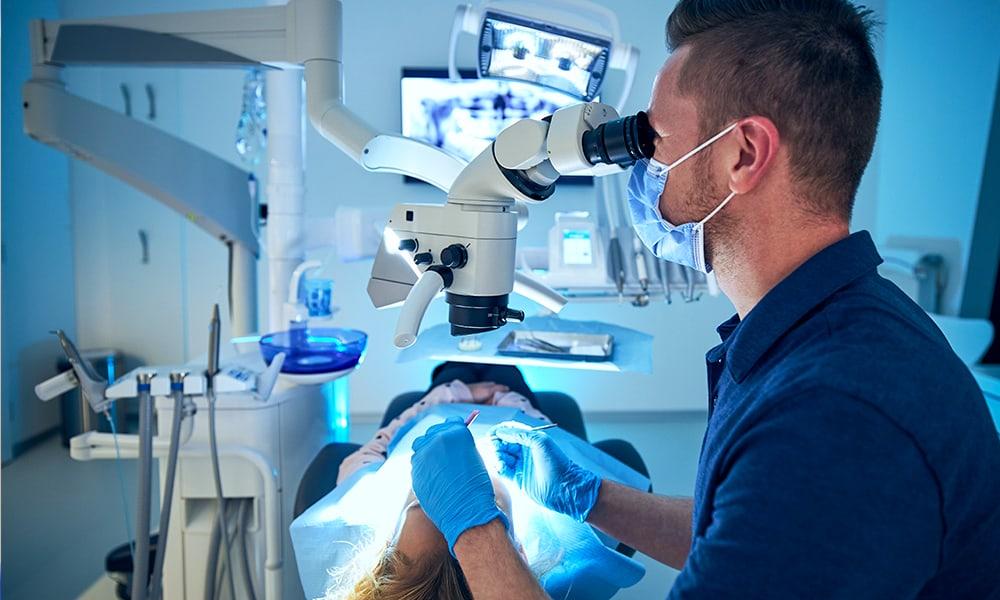Periodontics
Pocket Reduction Surgery

The phrase “pocket reduction surgery” also known as “gingivectomy,” “osseous surgery,” and “flap surgery” refers to a variety of procedures designed to get access to the teeth’s roots, and remove tartar (calculus) and germs.
When periodontal infections reach the subgingival region, they trigger a persistent inflammatory response in the body that actually kills bone and gum tissues (below the gum line). As more tissue is removed from the area around the teeth and gums, gum periodontal pocket develop and get deeper.
Periodontal disease is a degenerative disorder that, if ignored, results in significant bacterial colonization in gum pockets and may ultimately result in tooth loss. In an effort to break this harmful cycle and lessen the depth of the pockets that contain germs, pocket reduction surgery is performed.
The Benefits of Pocket Reduction Surgery
A popular periodontal surgery called pocket reduction surgery has been shown to be successful in removing germs, lowering swelling, and preserving teeth. Surgery for pocket reduction aims to:
- Prevent the spread of germs – A number of other dangerous illnesses, including diabetes, heart disease, and stroke, have been linked to oral bacteria. Through the circulation, oral bacteria can disperse to different areas of the body where they can colonize. To lower the risk of secondary infection, it is crucial to minimize oral bacterial growth.
- Stopping bone loss – The body breaks down bone tissue as a result of the persistent inflammatory response caused by oral bacteria. Periodontal diseases weakens the jawbone, which causes the teeth to lose their solid base. The teeth may need to be extracted if they become too loose.
- Facilitate home care – The patient will find it extremely challenging to clean the gum pockets as they get deeper with time. The risk of developing more periodontal infections rises because the toothbrush and dental floss cannot get to the bottom of the pockets.
- Enhancing the smile – A mouth that has periodontal disease is not visually appealing. In reality, discolored gums, decayed teeth, and ridge indentations can ruin all smiles. Surgery for pocket reduction slows the spread of gum disease and enhances the appearance of the smile.
What is a pocket reduction procedure?
Our periodontist will do extensive visual and X-ray exams to determine the state of the teeth, gums, and supporting bone before making a treatment recommendation or carrying out any surgery. Depending on the patient’s wishes, pocket reduction surgery can be done under local or general anesthesia.
Bacteria and calculus (tartar) will be removed by gently pulling the gums away from the teeth. In most cases, scaling and root planing will be necessary to completely remove the ossification (tartar) from the tooth root’s surface. To prevent the gums from reattaching to rough or uneven surfaces when they do heal, a planing process will be used if the root is not entirely smooth.
Typically, an antimicrobial liquid is used as the last step after surgery to get rid of any last-minute bacteria and speed up recovery. After that, the gum is stitched up using small sutures that need to stay in place for 5–10 days.
Even though the gums will be more painful right after the surgery, the teeth and gums will be in much better shape and the depth of the pocket will be significantly reduced.
Please get in touch with our periodontist Dr. Elliott Weidman if you have any questions about pocket reduction surgery or periodontal disease treatment.

Book Appointment
Do you need to see a dentist? We’re here to help. Book your next dental visit with ease.
FREE IMPLANT CONSULTATION
CATEGORIES
- Cracked tooth
- Avulsed tooth
- Broken, lost, or loose crown
- Gum abscess
- Broken denture
- Toothache
- Head injury such as a fall
- Loose implant
FOLLOW US

Book Appointment
Do you need to see a dentist? We’re here to help. Book your next dental visit with ease.

Book Appointment
Do you need to see a dentist? We’re here to help. Book your next dental visit with ease.
FREE IMPLANT CONSULTATION
Considering implants?
Schedule a 30-minute FREE, no-obligation office consultation with us.
Call (289) 815-5385 or complete an online appointment request.
CATEGORIES
- Cracked tooth
- Avulsed tooth
- Broken, lost, or loose crown
- Gum abscess
- Broken denture
- Toothache
- Head injury such as a fall
- Loose implant
FOLLOW US
Take a peek inside our dental office.
What Our Practice Looks

Mon - Thu: 8:30 AM - 5:00 PM
Alternating Fri: 10:00 AM - 3:00 PM
Follow Us
Contact Us

Mon - Thu: 8:30 AM - 5:00 PM
Alternating Fri: 10:00 AM - 3:00 PM
Follow Us
Contact Us
© All Rights Reserved aestheticimplantdentistry.ca
Privacy Policy | Terms of Use | Sitemap
A Dentistfind Website



